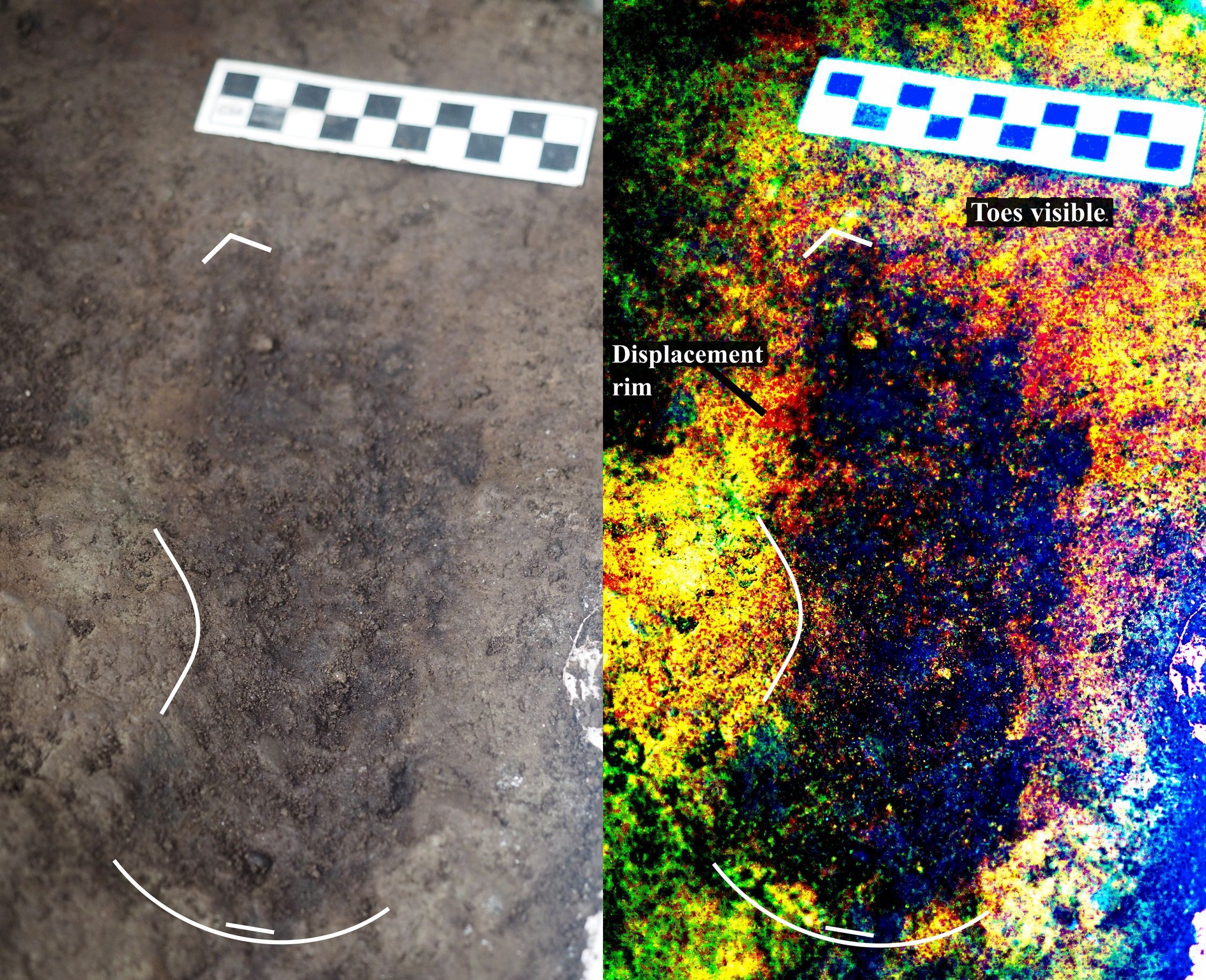Found: 13,000-Year-Old Human Footprints Off Canada’s Pacific Coast
They support a hypothesis that early people followed a coastal migration route into North America.

The last ice age ended 11,700 years ago. Scientists have long hypothesized that during that frigid time early humans walked from Asia to North America using a land bridge called Beringia. Some eventually arrived on the coast of present-day British Columbia, Canada, which stood at the western edge of the Cordilleran Ice Sheet that then spread across North America.*
There isn’t much archaeological evidence to substantially show their major migration route south into the rest of North America. One hypothesis is that they moved southward from Beringia via unglaciated land located between the Pacific Ocean and the Cordilleran Ice Sheet, which could support vegetation and large mammals, as well as provide access to marine resources. When exposed to coastal erosion and years of soil accumulation, footprints don’t always stay preserved. Yet, a new study from the Hakai Institute and University of Victoria, Canada, provides the needed evidence to support this migration hypothesis.
Off the Calvert Island shoreline in British Columbia, researchers discovered 29 human footprints impressed into sediment found below the beach’s surface. These footprints were not just rounded oblong shapes; some samples showed defined toes, rims, and heels, which is a rare find.
The researchers then excavated the tracks, and through photo analysis and radiocarbon dating, found many of footprints dated back to 13,000 years ago. Their lengths ranged from 15 cm (5.9 inches) to 28.5 cm (11.2 inches) and their widths were between 6 cm (2.4 inches) to 13 cm (5.1 inches) When plotted in a scattergram, these measurements, according to the study, “fall into three distinct size clusters suggesting that the tracks were left by a minimum of three individuals.” The most likely combination is two barefooted adults and one child. And it seems these humans were on the move.
The research team plans to conduct further analysis on the footprints, and possibly find more, but for now, the discovery is a great start. “This finding provides evidence of the seafaring people who inhabited this area during the tail end of the last major ice age,” said study co-author Duncan McLaren.
*Update: We originally conflated Beringia and the Cordilleran Ice Sheet, and have corrected the story to clarify the differences.











Follow us on Twitter to get the latest on the world's hidden wonders.
Like us on Facebook to get the latest on the world's hidden wonders.
Follow us on Twitter Like us on Facebook